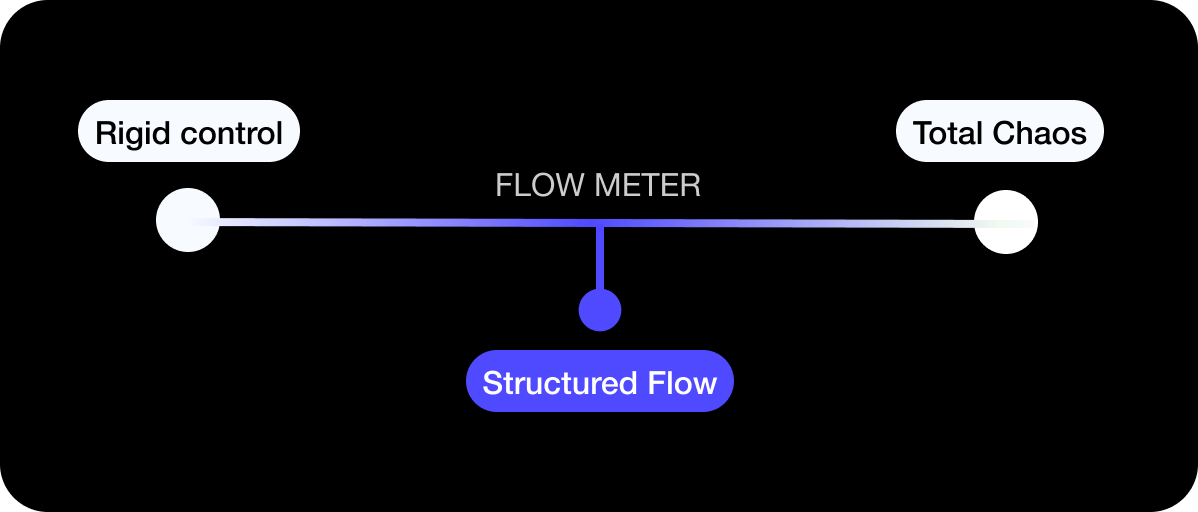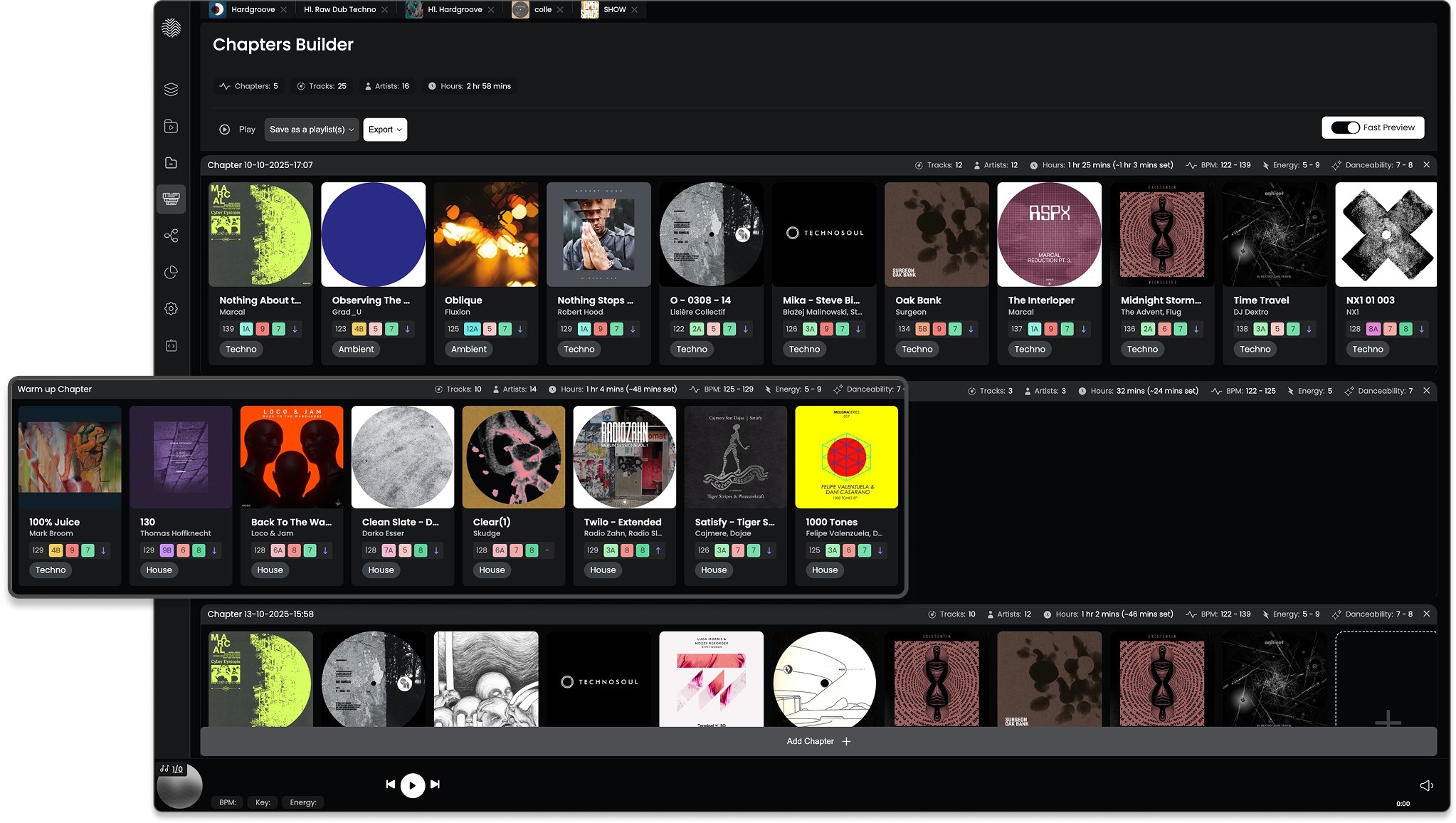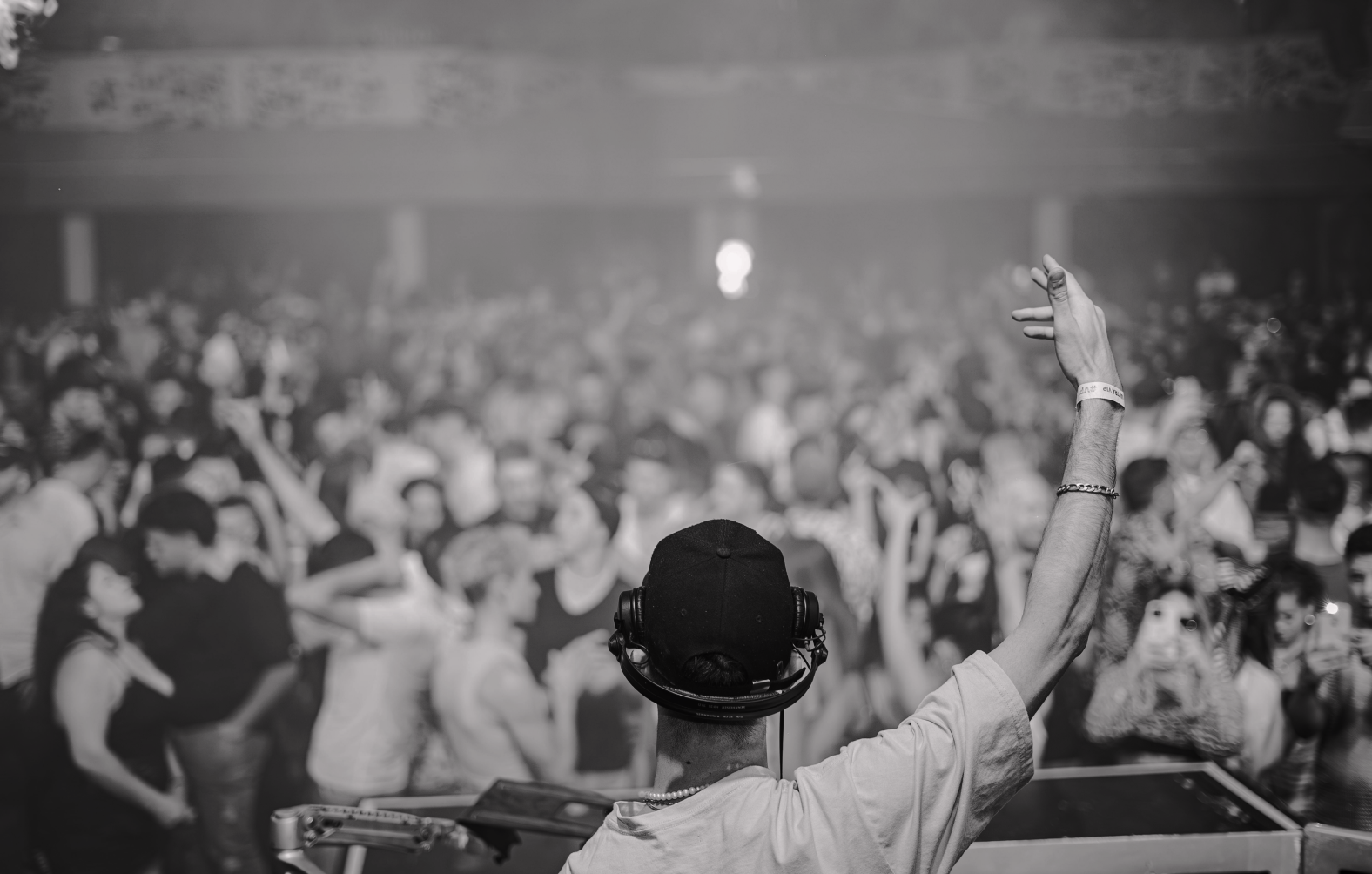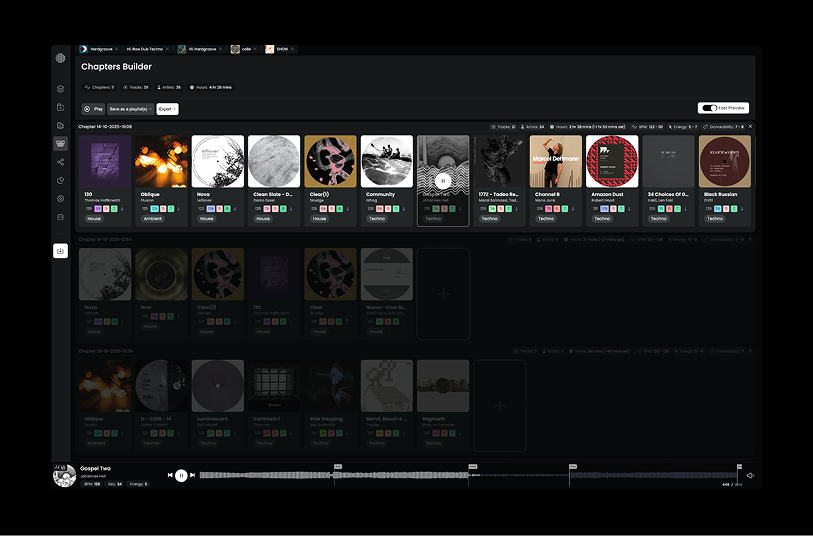
What separates a legendary DJ set; one that leaves the crowd breathless and is memorable, from your average DJ set?
Well, the answer isn't a secret stash of unreleased tracks or pure luck. It's structure. It's prep. But, most importantly, It’s knowing how to maintain structured flow throughout your set and creating a true journey for your audience.
There’s a persistent trend in the DJ world that splits performance into two extremes:
- Total Chaos: The DJ who is always improvising, leading us to an inconsistent, meandering journey that relies entirely responding to the crowd and what he has on hand.
- Full Rigidity: The "click-play" DJ who runs a single, immutable, almost pre-recorded file, eliminating any chance of connecting with the crowd.
The truth is, great DJing lives between these two extremes:

Great Djing is about building a flexible framework that allows you to confidently guide the crowd instead of responding to it, while still remaining perfectly prepared to react and improvise when the moment demands it.
Why "Track-to-Track" DJing Falls Short

If there's one takeaway you should have from this article is this; the DJ is a guide, not a follower.
Without any form of pre-planned structure, you will constantly be reacting, throwing a track out to compensate for the last one that fell flat, or desperately trying to keep energy up.
Yet, the truth is, that every great set has a hidden structure. And, when this framework is executed flawlessly, it becomes invisible to the listener. When it's missing or executed poorly, the audience notices the clear disruptions, even if they can't articulate why the "flow" is off.
So, now you might be wondering: how do you establish this flexible structure without losing your ability to improvise?
Using Chapters to Craft Structured Flow

The solution is to think of your entire set, whether it's 60 minutes or four hours, not as a single stream of tracks, but as a series of chapters. Each chapter is a self-contained unit with a specific goal:
- Energy Level: A defined tempo and intensity range (e.g., Deep House, Peak-Time Techno, Cool Down Ambient).
- Emotional Arc: A feeling you want to evoke (e.g., The Climb, The Release, The Euphoria).
- Chapters: A small collection of 3-7 core tracks that work together flawlessly and share a cohesive vibe.
Using chapters gives you the best of both worlds:
- Preparation: You've meticulously curated the vibe and transitions within each chapter.
- Flexibility: When you need to pivot mid-set (example: the bar is suddenly packed or emptying out), you don't have to scramble for a single track. You just jump to an entirely different, pre-prepared chapter that matches the new energy.
Understanding The Anatomy of a Legendary DJ set

While you can define your own chapters, every truly iconic set follows a fundamental arc that can be broken into these chapters:
- Intro/Warmup/ Arrival: Setting the tone, low-energy, typically lower BPMs.
- Climb: The gradual build, increasing tempo and intensity.
- Peak/Highlight: The point of maximum energy and emotional release.
- Break/Cool Off: A momentary dip in energy to reset the dance floor's stamina and anticipation.
- End/Closing: The final act, leaving a lasting impression.
Ready to put this knowledge into practice? Djoid's Chapter Builder is the perfect tool to start creating this flexible framework for creating your DJ sets. However, you can still follow along the excercise below even if you do not have Djoid yet.
Practice Exercise: Create Gig-Ready Chapter Set
Here is a simple exercise to help transform your static playlists into adaptable, gig-ready sets:

INSTRUCTIONS
1) Define Your Chapters & Core Tracks
Divide your set into 5-7 chapters based on energy and emotion. Then, assign 3-5 tracks to each chapter that fit the mood of each chapter.

Here are some suggestions you can follow to help you build your chapters:
(Format: Chapter Name, Suggested BPM*/ Vibe Range Core )
- Warmup: 115-120 BPM / Deep, Ambient
- Climb: 120-125 BPM / Groove, Rhythmic , Driving
- Peak: 128-130 BPM / Euphoric, Intense
- Break: 123-127 BPM (A slight dip) / Hypnotic, Percussive, Tension-Building.
- Closing: Melodic, Emotional
Be intentional with your selections. Make sure the flow is seamless and the track selection really represents you and your sound identity.
*Note: suggested BPM is just that, suggested, it is not required to complete this excercise and it is not a guideline to follow for the listed chapters
2) Adding additional tracks:
After completing your core track selection, feel free to expand each chapter with additional picks besides your core tracks keeping in mind the intended duration of the set.
3) Listen to your whole set and review:
Don't get caught in perfecting one chapter, the flow needs to work throughought. Listen to the whole set and make any necessary changes.
REFLECTION
After completing this exercise take note of:
- The best transition overall. Why is it the best?
- Identify any moments that need a smoother energy (if any).
And that's it.
You've prepared for flow without sacrificing spontaneity. By dividing your set into intelligent, well-prepared chapters, you are no longer chasing the crowd—you are confidently guiding them on a memorable journey.
Ready to stop chasing and start guiding?
Use Djoid's Chapter Builder Now →










